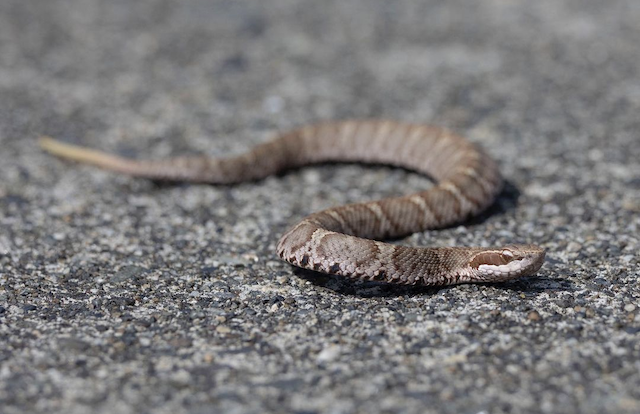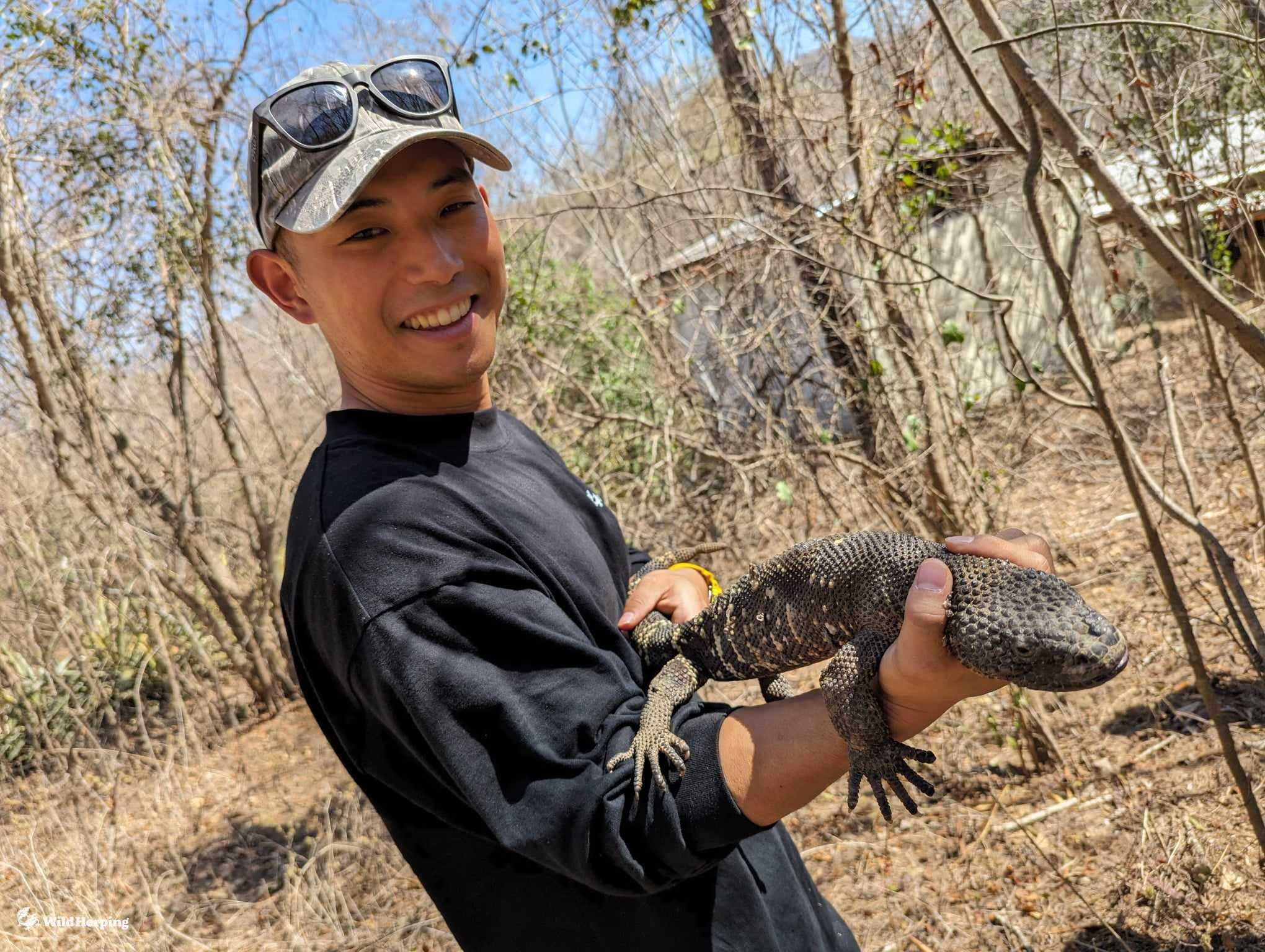Today let me introduce you my favorite snake in Japan, the Japanese mamushi pit viper(Gloydius blomhoffii).

Morphology:
- Length: 400–600 mm.
- Coloration varies greatly but typically brown, with black-brown markings on the dorsal side forming pairs slightly shifted front and back.
- Ventral side yellow-white with dense irregular black-brown markings.
- Head triangular, covered in well-differentiated scales, featuring pit organs between nostrils and eyes acting as infrared sensors.
- Neck slender, head much larger than neck.
- Upper jaw with retractable venomous fangs; pupils vertically elliptical and black, tail relatively short.

Similar Species:
- Young Aodaisho snakes resemble Mamushi Vipers, with brown background and black-brown markings, sometimes mistaken for Japanese pit vipers. However, Mamushi Vipers can be distinguished by their extremely slender neck compared to their head and very short tail.
Habitat:
- Mamushi Vipers are commonly found in lowland areas such as riverbanks, bamboo groves, field margins, and rice paddies, extending from plains to mountains. They also appear frequently in high-altitude and arid regions.
Reproduction:
- Mating and Birth: Mating usually occurs in May and June. They are ovoviviparous, with fertilized sperm overwintering inside the female reproductive tract. Delayed fertilization is suspected, with females giving birth to 2–13 young snakes (snakelets) in late nights to early mornings from August to October in waterside grasses the following year.
- Snakelets: Newly hatched snakelets measure about 200 mm in total length. They grow to 300–370 mm in the first year, 400–470 mm in the second year, and reach 450–550 mm by the third year. Females are larger, but males have thicker, longer tails.
- Lifespan: Records show captive individuals living up to 12 years, but wild lifespan remains unknown.
Diet:
- Carnivorous, preferring live prey such as lizards, frogs, mice, and fish. They rarely consume carrion.
They are primary nocturnal but in early spring they tend to be active more at day time because of its warmer temprature.This article delves into the morphology, habitat, reproduction, and diet of the Mamushi Viper, a venomous snake found in various habitats ranging from lowlands to mountains. It describes the physical characteristics of the snake, including its coloration, head structure, and distinctive features like its pit organs. The piece also highlights how the Mamushi Viper is often mistaken for similar species and explains how to differentiate them. Additionally, it explores the snake’s habitat preferences, reproductive behavior, growth rate of offspring, and lifespan. Finally, it discusses the Mamushi Viper’s carnivorous diet, focusing on its preference for live prey over carrion. This summary provides a concise overview of the comprehensive information presented in the article.Hope this will help you to meet them here in Japan.









